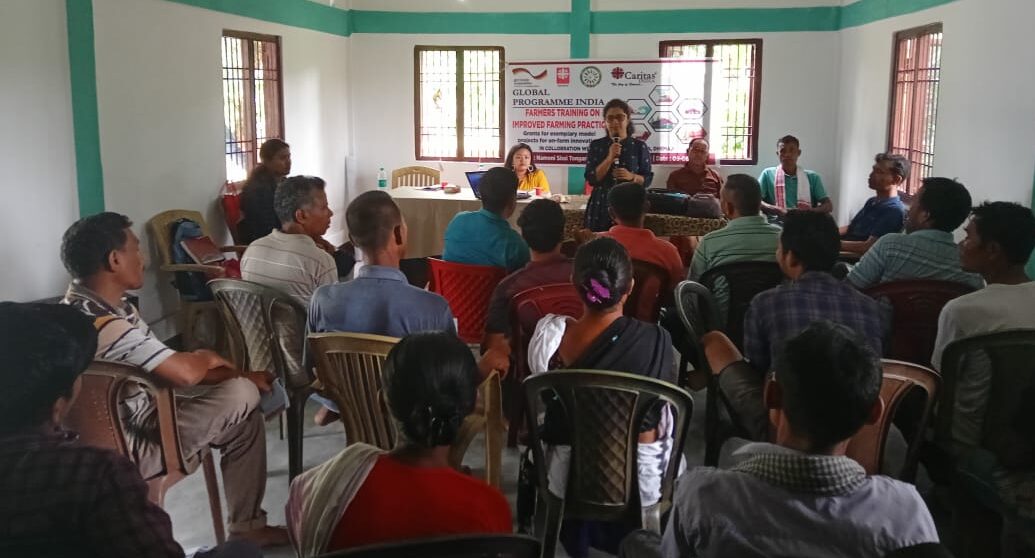One of the major problems in agriculture development and the economic backwardness of Assam is the occurrence of frequent floods every year. Starting from May till October, Assam receives heavy southwest monsoon rainfall. In some years, high-intensity waves of floods (4-5 in a year) occur, thus causing massive damage to the crops. Since rice is usually cultivated in low-lying areas, it is usually the rice crop which gets worst hit by floods. This period is very crucial for almost every farmer in the state. Because this is the time when ‘ahu’ rice (autumn rice) is harvested and ‘sali’ rice (winter rice) – the main khariff crop – is cultivated. Unfortunately, floods occur during this important period only.

To promote innovations in agriculture, a grant for exemplary investments in model projects for alternative off-farm income opportunities was given to 50 progressive farmers with Flood Resilience Paddy Seed (Ranjib Sub-1). Along with the seed support, the farmers were also given training on improved farming practices organised by Women Development Centre in collaboration with Krishi Vigyan Kendra Dhemaji. While addressing the participants the facilitators mentioned that in paddy cultivation in a scientific manner, one of the most crucial parts is selecting good quality seeds which can sustain through the climatic season and yield good production. In flood-prone areas like Dhemaji, it is suitable to go for flood-resilient paddy seeds like Ranjit Sub 1, Bahadur Sub 1, Swarna Sub1, Bina Pani etc. One of the most significant characteristics of flood resilient seeds is that they can survive even after getting submerged under flood water for 15 days. The facilitator advised the participants that while procuring seed one must always look for reputed seed suppliers and certified seed supplying agencies.
The difference between Hybrid and High Yielding Seeds was also explained by the facilitators. He said that hybrid seed can grow very well, however it cannot ensure more production. Whereas high-yielding seeds are of better quality to produce healthy and surplus crops and have a good immune system to fight against diseases and insects. However, unlike the locally produced the scientifically produced seed tend to lose their properties after two to three years. So, it is recommended to procure a new seed after that duration
In the end, the Facilitators gave their detailed valuable inputs on Improved farming practices, integrated nutrient management and pest management, thus helping the farmers to learn about the steps that they can take to protect their crops.


Leave a Reply